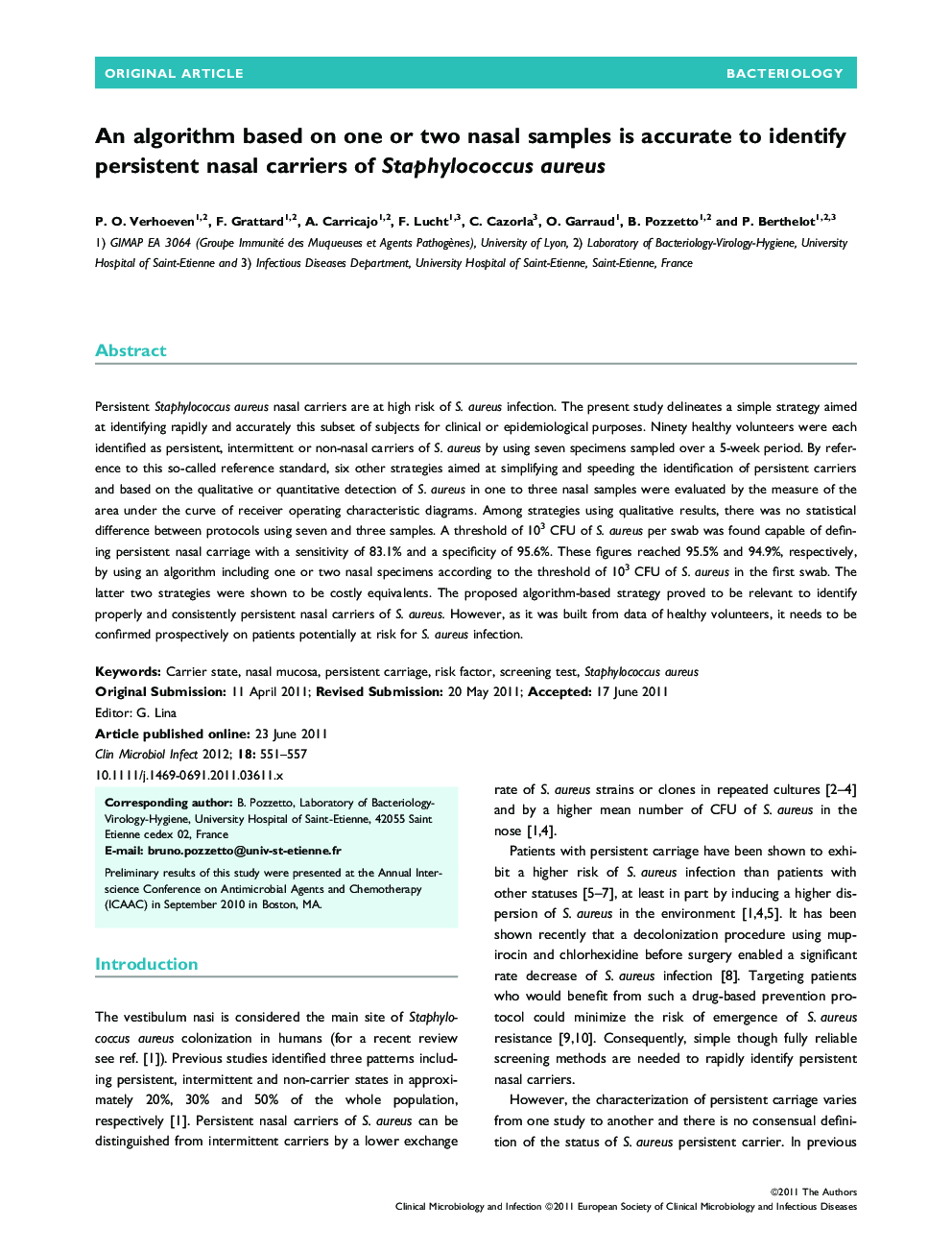| Article ID | Journal | Published Year | Pages | File Type |
|---|---|---|---|---|
| 6130953 | Clinical Microbiology and Infection | 2012 | 7 Pages |
Abstract
Persistent Staphylococcus aureus nasal carriers are at high risk of S. aureus infection. The present study delineates a simple strategy aimed at identifying rapidly and accurately this subset of subjects for clinical or epidemiological purposes. Ninety healthy volunteers were each identified as persistent, intermittent or non-nasal carriers of S. aureus by using seven specimens sampled over a 5-week period. By reference to this so-called reference standard, six other strategies aimed at simplifying and speeding the identification of persistent carriers and based on the qualitative or quantitative detection of S. aureus in one to three nasal samples were evaluated by the measure of the area under the curve of receiver operating characteristic diagrams. Among strategies using qualitative results, there was no statistical difference between protocols using seven and three samples. A threshold of 103 CFU of S. aureus per swab was found capable of defining persistent nasal carriage with a sensitivity of 83.1% and a specificity of 95.6%. These figures reached 95.5% and 94.9%, respectively, by using an algorithm including one or two nasal specimens according to the threshold of 103 CFU of S. aureus in the first swab. The latter two strategies were shown to be costly equivalents. The proposed algorithm-based strategy proved to be relevant to identify properly and consistently persistent nasal carriers of S. aureus. However, as it was built from data of healthy volunteers, it needs to be confirmed prospectively on patients potentially at risk for S. aureus infection.
Related Topics
Life Sciences
Immunology and Microbiology
Microbiology
Authors
P.O. Verhoeven, F. Grattard, A. Carricajo, F. Lucht, C. Cazorla, O. Garraud, B. Pozzetto, P. Berthelot,
